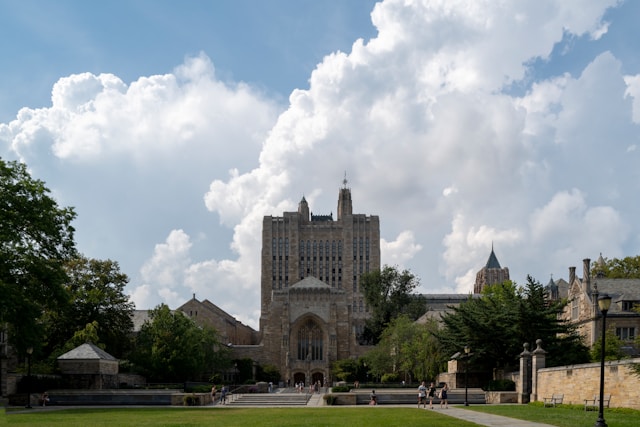Connecticut Gov. Ned Lamont just rolled out a revised “housing growth” bill. The aim? Expand affordable and workforce housing, but without trampling on the independence of local communities.
After vetoing a stricter, more state-driven proposal in July, Lamont’s new plan leans hard on teamwork between state officials and towns. He wants to unlock housing opportunities everywhere—from Hartford to Stamford—by working with, not against, local leaders.
Explore top-rated stays with no booking fees and instant confirmation. Your dream trip starts here!
Start Exploring Now
This proposal could breathe new life into vacant properties and transit-adjacent neighborhoods. Connecticut’s housing affordability crisis isn’t fading, and these changes might finally start to move the needle.
The Push for Affordable and Workforce Housing
Housing affordability is a stubborn problem in Connecticut, especially in cities like Bridgeport, Waterbury, and New Haven. Lamont’s latest bill nudges towns and cities to lead their own growth strategies, with the state offering help instead of demands.
From Veto to Collaboration
Back in July, Lamont said no to a previous housing bill, calling it too rigid. Now, he’s focusing on cooperation—listening to what communities from Middletown to Greenwich actually need and giving them the tools to revitalize unused spaces.
Transforming Vacant Properties and Boosting Transit-Oriented Development
A big part of the bill zeroes in on reusing vacant commercial properties. Think empty office buildings or old retail spots in Norwalk or Bristol—these could become new homes for workers and families.
Proximity to Rail Lines and Downtowns
The proposal also champions transit-oriented development. By adding housing near public transit hubs in places like Stamford, Meriden, and New Haven, the plan hopes to make life less car-dependent and a bit more convenient.
Easing Zoning Barriers and Supporting Infrastructure
Local zoning rules often get in the way of new housing. Lamont’s plan tackles these issues by urging towns to relax restrictions, like strict parking minimums, which can block affordable, denser projects.
State Investment in Sewer and Water Systems
The bill sets aside money for crucial infrastructure upgrades. With help for sewer and water improvements in areas like Waterbury and Hartford, towns can get ready for new homes without facing overwhelming costs.
Broad Bipartisan Support
Legislative leaders on both sides have thrown their support behind the compromise. They see that adding more homes helps with affordability and opens up economic opportunities in cities like Bridgeport and New Britain.
Local officials seem to appreciate the plan’s flexibility and its respect for municipal decision-making. That’s a breath of fresh air compared to some previous proposals.
Voices from the Administration
Lt. Gov. Susan Bysiewicz points out the administration has already finished 14,000 affordable units, with 7,000 more in the pipeline. Still, she warns, demand keeps outpacing supply—so there’s a real sense of urgency here.
Why This Matters for Connecticut Residents
Affordable and workforce housing isn’t just about helping low-income folks. It’s also about making it possible for teachers, nurses, and first responders to actually live in the communities they serve—whether that’s Hartford, Stamford, or Danbury.
The Balance Between Local Control and State Support
Some critics of the old bill worried about the state overstepping. The new version tries to strike a balance, offering support and resources but letting towns make the final calls.
Key Features of the Housing Growth Bill
The proposal’s main ingredients:
- Turning vacant commercial properties into housing
- Pushing for transit-oriented development near rail lines and city centers
- Cutting zoning barriers, like parking minimums
- Funding for sewer and water infrastructure
- Prioritizing flexibility and local control
- Bipartisan support in the legislature
- Alignment with the state’s ongoing housing efforts
- Addressing both affordability and workforce housing needs
Looking Ahead
The bill goes up for debate in a special legislative session next week. Lawmakers, local leaders, and housing advocates—from New London to Torrington—mostly seem on board.
If it passes, expect to see changes in real estate, more jobs, and maybe even a better quality of life across Connecticut. Here’s hoping it delivers.
A Step Toward Housing Stability
The revised housing growth bill offers a real shot at tackling Connecticut’s housing struggles. It tries to balance local control with some much-needed state support.
Connecticut could see more affordable homes pop up, and maybe even some neighborhoods get a new lease on life. Folks across the state might finally catch a break when it comes to finding a place they can actually afford.
—
If you’d like, I can also provide you with an **SEO-friendly meta description** and keyword list for this blog post to help boost local search rankings. Would you like me to add that?
Here is the source article for this story: New Bipartisan Housing Bill Announced By Gov. Lamont, Local Leaders: Here’s What The Bill Does
Find available hotels and vacation homes instantly. No fees, best rates guaranteed!
Check Availability Now








